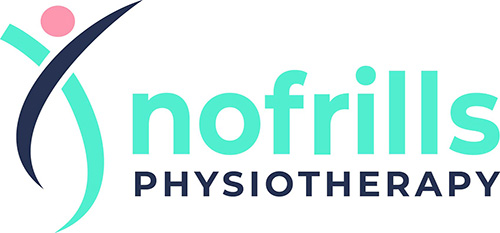Services
Ankle Sprains: How Physiotherapy Helps
Physiotherapy can aid in ankle sprain recovery by improving strength, flexibility, and balance while reducing pain and inflammation.
Causes, Management and Physiotherapy Treatment
Ankle sprains are more than just a temporary setback—they can significantly affect your quality of life. Whether you’re an athlete, a fitness enthusiast, or someone who values pain-free movement, an ankle sprain can disrupt your activities. These injuries occur when the ligaments supporting the ankle are stretched or torn due to sudden twists or rolls. Regardless of their severity, it’s crucial to seek professional physiotherapy treatment to prevent further complications and reduce the risk of future sprains. In this article, we address some common questions we receive about this condition as physiotherapists in Singapore.

Why do Ankle Sprains occur?
Sports Activities
Participating in high-impact sports and activities that involve sudden changes in direction, jumping, or running can elevate the risk of ankle sprains. Sports like soccer, basketball, and tennis place significant strain on the ankle ligaments, making them more vulnerable to injury during quick movements.
Uneven Surfaces
Walking or running on uneven surfaces, such as gravel paths or rough terrain, can result in missteps and ankle twists. The ankle ligaments may become strained when the foot unexpectedly rolls or turns on these irregular surfaces.
Improper Footwear
Walking or running on uneven surfaces, such as gravel paths or rough terrain, can result in missteps and ankle twists. The ankle ligaments may become strained when the foot unexpectedly rolls or turns on these irregular surfaces.
Accidents and Falls
Slips, trips, and falls—whether indoors or outdoors—can cause sudden twists of the ankle. The force from these falls can lead to stretching or tearing of the ligaments, resulting in ankle sprains.
Weak Muscles
Insufficient strength and flexibility in the muscles that support the ankle joint can leave the ligaments more susceptible to injury. Weak muscles around the ankle are less effective at stabilizing the joint, which raises the risk of overstretching the ligaments.
How does an ankle sprain take to heal?
The healing time for an ankle sprain can vary significantly based on several factors, including the severity of the sprain, the individual’s age, overall health, adherence to treatment, and the specific treatment methods employed. Generally, ankle sprains are classified into three grades based on the extent of ligament damage:
Grade 1 Sprain (Mild)
Ligaments are slightly stretched, but there is no tearing. Mild pain, swelling, and minimal joint instability are common symptoms. Healing usually takes about 1 to 3 weeks.
Grade 2 Sprain (Moderate)
Ligaments are partially torn, resulting in moderate pain, swelling, and noticeable joint instability. Healing typically takes about 4 to 6 weeks, but complete recovery and a return to normal activities may take longer.
Grade 3 Sprain (Severe)
Can you walk on a sprained ankle?
It’s important to recognize that early mobility and gentle movement can aid healing, provided it’s done under the guidance of a medical professional. During the initial phase of an ankle sprain, regardless of severity, rest, elevation, and ice application are essential for reducing swelling. However, walking or putting too much weight on the injured ankle too soon can hinder recovery and increase the risk of further injury.
For an accurate assessment and personalized advice on when you can start walking on your sprained ankle, consult a healthcare provider, such as a physiotherapist. They can evaluate the severity of the sprain, your pain level, and your healing progress to offer the most appropriate recommendations for activity and weight-bearing.
How Can Physiotherapy Help with a Sprained Ankle?
At Nofrills Physiotherapy, our team in Singapore specializes in addressing pain related to muscles, bones, joints, and ligaments. By seeking physiotherapy, our experts can employ techniques such as manual therapy and exercise therapy to strengthen the muscles surrounding the ankle, enhance range of motion, and improve stability. We can also assist with taping the ankle during the healing process for added support.
Did you know that ankle sprains account for up to 40% of sporting injuries? Other common ankle-related conditions include snapping ankle. Seek ankle pain physiotherapy in Singapore with our experienced physiotherapists today. Contact us to book an appointment!

Office
279 Tanjong Katong Road
Singapore 437062
Monday to Friday : 9am – 8pm
Saturday : 10am – 7pm
Sunday : 10am – 6pm
Services
Knee Pain
Shoulder Pain
Neck Pain
Elbow and Wrist Pain
Ankle and Foot Pain
Stretch Therapy
Sports Therapy
Women's Health
Contact
(+65) 9007 1085
hello@nofrillsphysiotherapy.com
Address: 279 Tanjong Katong Road
Singapore 437062
Other Physiotherapy Services
Shockwave Therapy
Dry Needling
Sports Massage
Functional Fitness
Workplace Health
